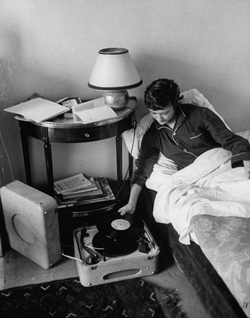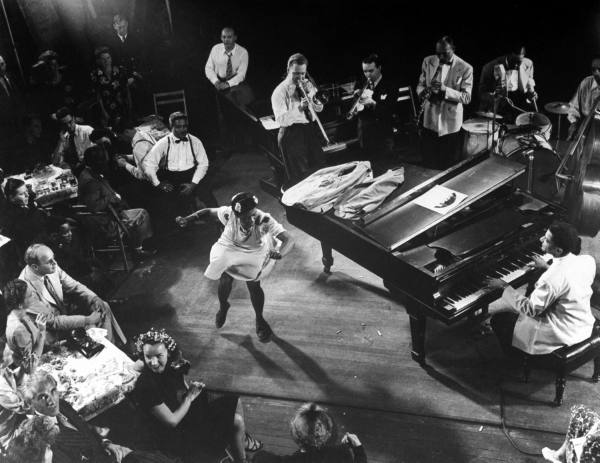Rereading my first post on beginning DJing, I’m struck by the lack of clarity in my writing. I did intend that first post as a sort of first scratch-around and scene-setting for my own experiences. Kind of a way of explaining how I got to this point in my thinking about DJing for swing dancers. But it didn’t quite work like that.
So let me revise that first post.
I’ve had a few people ask questions about getting into DJing. They tend to ask things like “what’re some tips for a beginner DJ?” It’s hard to answer these sorts of questions without giving too much information…
What I meant here, was:
- There’s so much to say about DJing generally, that a few simple tips can be overloaded by detail
- I really like talking about DJing (and most things), so it’s difficult to rein myself in and think simply and clearly about this stuff)
- There’s a big difference between ideas about DJing and actually, practically DJing. At the end of the day – and just like dancing – what you think and say has zero meaning when you’re out there with/on the dance floor
The second point in that (very busy) paragraph that I’d like to address is:
I’ve had a few people ask questions about getting into DJing. They tend to ask things like “what’re some tips for a beginner DJ?” It’s hard to answer these sorts of questions …without knowing about that person’s scene.
I think that, despite what we might like to think about the ‘nature’ of lindy hop, jazz dancing and jazz generally, the specific details of individual local dance scenes is far more important in shaping what DJs play and why. So sometimes advice and tips from an interstate or international DJ – or even a DJ playing on the other side of town in a very large scene – aren’t very helpful. How do I think about the different places and ways of DJing and being a DJ?
- Regular DJing in a local scene, playing for after-class socials, regular social dancing nights and occasional bits and bobs. This is the bread and butter of DJing. This is the stuff that keeps a scene’s social dancing working. It’s the day-in, day-out stuff like this, where you turn up every week or month or whatever to play for all sorts of crowds, from the very small to the very large, that makes up the bulk of my DJing. I also think it’s where I learn the most, and it’s also often the most challenging and most frustrating. But this is also where the crowds are kindest, you get the most satisfying feedback, and you can really learn to DJ with less pressure.
I’d distinguish between playing after-class stuff and social dancing ‘nights’. The first is where new DJs should cut their teeth, the second is where DJing can become more ‘important’, but also more pressured and more challenging. And more political. - DJing at large local events like dances or local exchanges This mightn’t involve large crowds, famous dancers from overseas or even very much truly satisfying DJing. But it’s a different animal to the regular stuff. There’re greater chances to stretch, but there’s also more pressure. Dancers expect more, and are usually more interested in dancing hardcore.
- DJing large interstate or national events This is where dancers expect to hear interesting, new, challenging music. This is where you get to stretch a little. This is where I think organisers should be really picky about who they hire to DJ and how they represent their event.
- International and ‘famous’ events I have no experience here, but I’m talking about DJing at large events overseas like Herrang, the more ‘famous’ exchanges like the DC Lindy exchange, and the ‘flavour of the month’ events like Camp Jitterbug, Showdown and so on. This is where there’s more money – to fly in and pay DJs – and more pressure.
There’re a whole range of other events for DJing: radio gigs, house parties, after after after parties, corporate and non-dancing events, DJing for competitions, DJing for classes and performances for the public and so on. These all require very different skills sets.
It’s difficult to make definitive statements about ‘how to DJ’ in each of these types of circumstances. How you DJ (and how your DJing is received) will also depend – in a very large way – on who you are.
A famous international teacher will get more leeway and a degree of arse kissing regardless of their ability to work a wave or transition between styles. Dancers may have other barrows to push, here, and demonstrating a great love for this DJ’s work might serve other purposes.
A DJ with an interstate or international reputation will be met with a degree of expectation and anticipation. The stakes will be higher, but then there might also be a degree of leeway granted simply because dancers are _expecting_ to be entertained.
One thing I’ve noticed, though: most dancers don’t know any DJs beyond those in their local scene. The longer a dancer’s been dancing, the more they travel, the more contact they have with visiting dancers, the more active they are in DJing-related online talk, the more likely they are to know a visiting DJ. But for the most part, 75% of dancers won’t have a clue and couldn’t give a shit. For them, the dancing’s the thing, and a band will always be more fun than a DJ. This is the case in most Australian scenes. I dunno what it’s like overseas. I also tend to think that this is a good way to be.
At the end of the day, the people who’ll pay most attention to your DJing are other DJs. And even then, 65% of them are too busy dancing/drinking to pay attention. Unless you really suck. Then they’ll notice.
To sum all this up, different settings require different DJing skills for most DJs. And the people who’ll know a scene best are the people who dance there, regularly, with the most people.
Other posts on beginning DJing:




